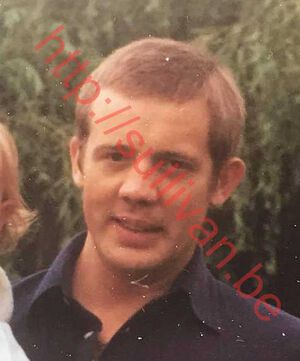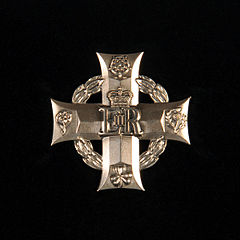Sullivan, Paul Steven - P13144
Paul Steven Sullivan (Sully) was born on June 15th 1954 in Northamptonshire as the son of Raymond A. Sullivan and Beryl A. Sullivan (nee Spence).
Paul worked with his dad Raymond, who was a builder before joining up at the age of 19 years old.
Paul met his wife Shirley A. Lampey (Bette) at the end of his first week of basic training in Aldershot at the Army and Navy, where he was doing his QA training. Paul and Bette married in 1977 in Hendon, Greater London, United Kingdom and they had a daughter Alesia Fay ( born 1979 in Aldershot). When Alesia was born he was away serving in the jungle in Brunei.
After completing P Coy and parachute training, he became a member of 12 Platoon, D Company, 2PARA.
Paul Steven Sullivan died on May 28 1982 during the Falklands campaign along with Lieutenant Barry whilst attempting to take an Argentine surrender. He is now buried at the Military Cemetry Aldershot.
Operations
- Brunei
- Northern Ireland (Operation Banner)
- Falklands (Operation Corporate)
Decorations
The General Service Medal (GSM)
The South Atlantic Medal (SAMR)
The Elizabeth Cross - Granted to the next of kin of servicemen and women who died during operations or were killed as the result of terrorist action since the Second World War
Battle of Goose Green
Private John Graham, from Lieutenant Chris Waddington's No. 11 Platoon, claimed that Lieutenant Barry and Corporal Sullivan, during a local truce, went forward to accept the Argentine surrender at the airfield and that the defenders suddenly opened fire without warning, killing Barry and wounding Sullivan, with one Argentine crawling forward to Sullivan and shooting him at point-blank range:
...I saw the white flag incident; I was in 11 Platoon. We were going up the hill, and the flag went up. The officer [Barry] called the sergeant [sic] and then got halfway up the hill. Bang! They let rip into them, Killed them. One guy [Corporal Paul Sullivan] was hit in the knee, and one of the bastards came forward and shot him in the head. He moved forward out of his position and shot him.
From eye witnesses:
"News of the death of Colonel H Jones during a heroic charge at Darwin Ridge had filtered through to all by now and the respective Company Commanders, although now under the able command of former 2 i/c Major Chris Keeble, would be required to press home the attack with an unfamiliar degree of autonomy. Boca House was secured at 13.47 local time, around the same time that A Company had overcome the defenders on Darwin Hill. The next immediate targets were the the school and the airfield, the battle for which was confused and hard fought:
‘Major Neame then pushed us straight on towards the schoolhouse at Goose Green. 11 Platoon opened fire on the little house first. The trouble was, they used 66s (anti-tank rockets) and phosphorus grenades which caused a fire, which didn’t give them very much cover. Then our C Company came down, ready to go in. My platoon was tasked to go up the track and give covering fire on the schoolhouse and also cover behind it to get anybody that tried to withdraw. The plan was to bottle them in there.
One of the rear sections saw some white flags waving near the airfield and he reported this to our Platoon Commander, Mr Barry, who said to me. “I’ll go forward and take the surrender, you look after these two sections.” So I moved where I could control both sections and see what was going on. I told the radio operator so that he could get into contact with the Company Commander about what was happening, and the runner as protection.
Mr Barry went over the rise with his men and I watched them move towards two Argentinians who had come forward with their hands in the air. The others were sitting behind them on the floor with their hands up. Because I had to watch my own section I had to keep my eyes in both directions as I was a bit concerned about Mr Barry going forward. I saw him talking to two Argentinians, who seemed to be worried about the firing still going on at the schoolhouse. Then for some reason, Mr Barry put a rifle against a fence. Suddenly, a burst of fire, probably from someone who wasn’t aware that a surrender was taking place, came whistling over the top. The Argentinians who’d been sitting there reacted immediately by picking up their weapons and firing. Mr Barry was killed instantly. Knight, the radio operator, killed two with his SMG but Corporal Smith, who was trying to give covering fire with a 66 and CPC Sullivan were also killed. Shevill was wounded in the shoulder and the hip. There was now an awful lot of firing going on.
As the senior person there I was doing the chasing about. I saw some of my lads hit the deck because of the volume of fire that was coming our way, but I got a grip on them, got them up and firing. I was covering a lot of ground, but that’s my job, that’s what I’m paid for. I got across another section and picked up a machine gun and knocked off three Argies with a couple of bursts each. Then, as I moved again, I took out two more. We moved forward and took their position and dealt with Shevill who was badly hurt. He crawled back into cover and so did Roach, who shouted that he thought he’d been hit. I shouted back that he would known if he’d been hit! However he had had the arse shot out of his trousers. Roach, with the help of Wilson, then gave first aid to Shevill while still under heavy fire. Unfortunately we couldn’t get him out for five hours.
There were so many sensations at that time that I had to think fast and hard because everything was changing from second to second - there were rounds going everywhere. I didn’t have time to be frightened. When Mr Barry was killed there was a lot of anger; the thing was, to kill them. So for each one I knocked down, I thought, ‘Well that’s another.’ The thing was to kill them as fast as we could, it was just whack, whack, and the more I knocked down the easier it became, the easier the feeling was - I was paying them back. The feeling was anger, a mixture of both anger and sadness - sadness because three good blokes should die like that.’ (ibid)
D Company Commander, Major Phillip Neame, gave his own account of this phase of the battle, adding further detail and giving particular praise to Meredith’s professionalism and gallantry: ‘Just as we were about to assault the school, I got news that Jim Barry, the other platoon Commander, had been shot when he had gone up to take a surrender under a white flag. He and half the section had been shot down. It was such a tragic waste of life. After a little deliberation as to where my priorities were, I left Pete Adams to command the assault on the school and I went back to join 12 Platoon to find that Sergeant Meredith by this stage had got the situation firmly under control. His platoon was busily knocking shit out of the Flagpole Position with 66 rocket launchers and machine guns. We didn’t know who had been killed or injured with Jim Barry, but certainly some of the injured were trying to get back. There were one or two very brave people there - Shevill who was very badly shot managed to pull himself back about 200 yards, finding his own cover, refusing help from others who would have had to expose themselves, and a couple of others who performed extraordinarily well for just private soldiers in organising themselves and getting their injured companions back under covering fire from Meredith and his crew. Meredith, of course, held it all together, and made sure the platoon continued to work together - a really solid number, hard as nails and with the ability to think. He never appeared fussed which is what I think really helped at this time, at least for his blokes...Carter and Meredith, between them, probably saved the lives of the other three involved in the incident.’ (Major Phillip Neame’s account of the action at Goose Green published in Above All, Courage by Max Arthur, refers)
Amid sporadic exchanges of fire and with light beginning to fade after nearly 36 hours of continuous fighting, most of the Argentines now began to make their way into Goose Green itself to find themselves besieged in a situation that was becoming serious. Meredith picks up his account once more as the Argentines make one final air attack on the British positions before Keeble’s intelligent use of prisoners of war to deliver proposed terms leads to the surrender of the garrison: ‘They then attacked us with a Pucará that dropped napalm. It just missed the Sergeant-Major’s party with the prisoners and wounded. It also missed a big ammunition dump - so we were lucky...We shot the Pucará down and captured the pilot. (He was one of the ones they sent in for the surrender, which they did the next day.) We moved into Goose Green the next morning and dug in...I had mixed feelings about the battle but it felt good to have won. Then there was the shock of seeing all those hundreds of Argentinians at the surrender. I couldn’t believe it. We’d attacked with a battalion, which was about 400 to 500 men, and they’d had 1200. In the end we sent one platoon of twenty-four men in to guard them. I felt we’d won a strategic battle - if we’d by-passed Goose Green we’d have left 1200 men there with a usable airfield, and that could have later been a big thorn in our side. They could have caused a lot of damage from there.’ "






